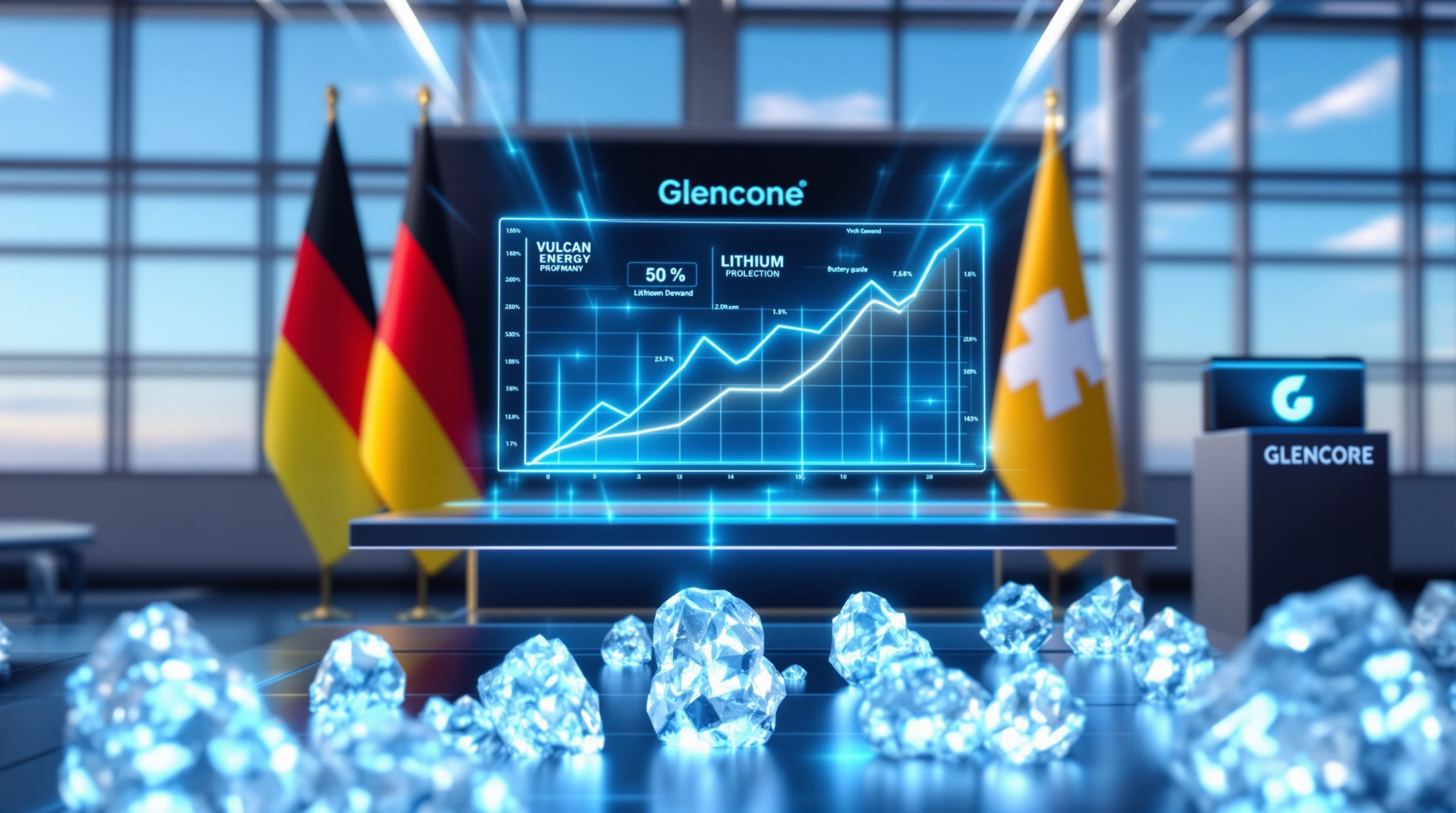What Is Creating Today's "Golden Age of Trading"?
The financial world is witnessing what leading Wall Street institutions have dubbed the "golden age of trading" – a period characterized by extraordinary market movements and wealth creation opportunities. This remarkable environment isn't happening by accident but rather through a perfect convergence of economic forces, technological advancement, and unprecedented market conditions.
Unprecedented Market Volatility Across Asset Classes
The CBOE Volatility Index (VIX) has maintained elevated levels throughout 2025, creating ideal conditions for active traders. Markets are experiencing record-breaking price movements that would have been considered extreme in previous years but are now becoming commonplace.
Double-digit weekly gains have become regular occurrences in commodities, with some assets showing similar movements in single trading sessions. This volatility isn't just random noise – it's creating distinct, tradable patterns.
Market cycles that historically played out over months or years are now compressing into weeks, providing frequent entry and exit opportunities for nimble traders.
Macroeconomic Forces Driving Market Movements
Today's markets are primarily macro-driven, with economic data points triggering predictable asset rotations. According to recent Federal Reserve economic data, inflation dynamics remain a central force in current market movements.
Geopolitical tensions have intensified resource security concerns, creating sustained upward pressure on key commodities. This has been particularly evident in precious metals and energy markets.
Central bank policies continue generating ripple effects across global markets. Each interest rate decision or policy announcement triggers cascading movements across currencies, bonds, and commodities.
Perhaps most significantly, US economic tariffs & inflation have emerged in key commodities after years of underinvestment in production capacity. These fundamental mismatches create powerful long-term price trends.
Technological Democratization of Trading
The trading landscape has transformed dramatically with advanced analysis tools now accessible to retail traders. Platforms that were once exclusive to institutional trading desks are available to individual investors.
Commission-free trading has reduced barriers to entry, with retail participation growing to approximately 25% of total market volume, up from just 10% pre-2020, according to Financial Industry Regulatory Authority data.
The proliferation of real-time data availability has created unprecedented information parity. Retail traders now receive economic announcements and market-moving news simultaneously with institutions.
Even algorithmic trading capabilities have been democratized, with drag-and-drop strategy builders allowing individuals to deploy systematic approaches without coding knowledge. Furthermore, the golden age of opportunity has made trading more accessible than ever before.
How Are Precious Metals Defining This Trading Renaissance?
While the golden age of trading spans multiple asset classes, precious metals have emerged as the centerpiece of the current market renaissance. Gold and silver have positioned themselves as two of the most exciting and opportunity-rich markets of 2025.
Gold's Historic Performance Metrics
Gold has established itself as the standout performer of 2025, delivering approximately 40% appreciation year-to-date. This remarkable run has seen gold setting 37 new all-time high gold analysis records in just nine months – averaging a fresh high nearly every week.
Even more impressively, gold has more than doubled in value over the past two years, climbing from approximately $1,800 per ounce in October 2023 to recently trading above $3,740 per ounce.
Market analysts note that gold's current momentum bears striking similarity to the historic parabolic run of 1979, the last time the yellow metal experienced such consistent upward movement.
The technical patterns forming in gold have become textbook examples of momentum-driven markets, providing traders with clear entry and exit signals.
Silver's Explosive Market Trajectory
Silver has demonstrated even more explosive percentage gains, recently touching $44 per ounce – representing a 14-year high and a stunning 120% increase from its $20 per ounce level just two years ago.
The industrial-monetary metal has entered its fifth consecutive year of supply deficit, creating fundamental support for higher prices. The Silver Institute confirms persistent shortfalls between production and consumption.
What makes silver particularly compelling is its dual demand drivers: industrial applications (including solar panels, EVs, and AI infrastructure) combined with investment demand as a monetary metal.
Technical analysts point to silver's historic volatility compared to gold, with the potential for significantly larger percentage moves once key resistance levels are breached. The recent silver market squeeze has further highlighted these dynamics.
Wall Street's Bullish Outlook on Precious Metals
Major financial institutions have turned increasingly bullish on precious metals, raising price targets and publishing research supporting continued upside. Their analysis points to a combination of inflation concerns, geopolitical risk, and fundamental supply shortages.
Leading investment banks have published aggressive forecasts, with some projecting gold to reach $4,000-5,000 per ounce in the coming years.
Silver projections are equally impressive, with many analysts targeting the metal to exceed its previous all-time high above $50 per ounce before potentially pushing toward $100.
Institutional capital flows have accelerated into the sector, with significant allocations from hedge funds, family offices, and sovereign wealth funds creating sustained buying pressure.
Why Is This Period Creating Exceptional Wealth-Building Opportunities?
The current golden age of trading isn't just about market volatility – it represents a fundamental wealth transfer happening in real-time. Understanding this dynamic helps traders position themselves on the right side of these capital flows.
The Wealth Transfer Phenomenon
We're witnessing a significant capital shift from traditional assets to alternative investments as investors seek protection from monetary uncertainty. This redistribution creates opportunities for traders who identify these flows early.
Resource security concerns have prompted sovereign wealth funds and central banks to accelerate precious metals accumulation, with official gold purchases reaching multi-decade highs according to World Gold Council data.
Smart money is positioning ahead of structural economic shifts, creating leading indicators that astute traders can follow. The footprints of institutional capital movements are increasingly visible in market data.
Perhaps most significantly, retail investors now have unprecedented access to these same markets, allowing individual traders to participate in opportunities previously reserved for financial elites.
Case Studies of Trading Success in 2025
The exceptional market environment has translated into record profits for trading desks across Wall Street. Major banks have reported commodity trading revenues exceeding previous annual records in just the first three quarters of 2025.
Leading hedge funds have generated billions from commodities trading this year, capitalizing on clear trends and macro-driven price movements.
Individual traders have achieved remarkable results as well, with documented cases of six and seven-figure returns by those applying disciplined methodologies to these volatile markets.
What's particularly notable is the pattern of accelerating returns as market volatility increases, creating a positive feedback loop for traders who maintain discipline through market fluctuations.
The "Buy Low, Sell High, Rinse and Repeat" Opportunity
The current environment has revitalized classic trading approaches. Short-term, macro-driven trends create predictable cycles that respond well to traditional technical analysis.
Week-to-week price movements offer multiple entry and exit points, allowing traders to compound profits through frequent rotation. This compressed cycle phenomenon multiplies opportunity frequency.
Technical analysis effectiveness has been enhanced by clear market patterns, with support and resistance levels showing stronger validation during trending markets.
Momentum strategies are yielding exceptional risk-adjusted returns as trends develop more clearly and extend further than in typical market environments.
What Trading Strategies Are Most Effective in This Environment?
The golden age of trading rewards specific approaches that capitalize on the unique characteristics of today's markets. Understanding which strategies work best helps traders adapt to the current environment.
Technical Analysis Approaches for Volatile Markets
Key support and resistance levels are showing stronger validation in current markets, creating more reliable price reaction points. Traders report higher probability outcomes when using these technical levels.
Momentum indicators are providing clearer signals in trending markets, with relative strength measurements accurately capturing sustained price movements.
Pattern recognition has yielded higher probability outcomes as textbook chart formations complete more predictably during periods of directional momentum.
Time-frame alignment strategies have proven particularly effective, with traders using multiple timeframes to confirm entries and exits while reducing false signals.
Fundamental Trading Catalysts to Monitor
Economic data releases are triggering more predictable market responses, creating trading opportunities around scheduled announcements. The market's reaction function has become more consistent.
Supply constraint announcements have immediate pricing impacts, particularly in commodity markets with existing structural deficits.
Geopolitical developments affecting resource security perceptions can create sustained trends rather than just short-term volatility spikes.
Central bank policy shifts impact currency values and, by extension, dollar-denominated commodities, creating reliable trading catalysts. Additionally, the US‑China trade war impact continues to create significant market movements.
Risk Management in High-Opportunity Environments
Position sizing strategies require adjustment for volatile market conditions, with professional traders typically reducing standard position sizes by 20-30% to account for wider price swings.
Profit-taking approaches during parabolic price moves become essential, with partial profit capture at technical resistance levels preserving gains during potential reversals.
Hedging techniques to protect accumulated gains have gained importance as portfolio values grow more rapidly in trending markets.
Most critically, maintaining psychological discipline during exceptional market periods prevents overtrading and emotional decision-making when profits accumulate quickly.
How Can Traders Maximize Their Results During This Golden Age?
Success in the current golden age requires a combination of specific skills, professional methodologies, and disciplined execution. Traders who develop these capabilities position themselves for superior results.
Skill Development Priorities for Today's Markets
Macro trend identification and interpretation have become essential skills, with the ability to connect economic data points to likely market movements.
Technical analysis proficiency enables precise timing of entries and exits, capturing optimal risk-reward opportunities within established trends.
Risk management discipline preserves capital during inevitable market fluctuations, allowing traders to remain in position for major moves.
Perhaps most importantly, psychological resilience during market extremes prevents emotion-driven decisions that undermine strategic execution.
Leveraging Professional Trading Methodologies
A research-driven approach to market analysis separates successful traders from speculators, with systematic evaluation of both technical and fundamental factors.
Real-time adaptation to changing conditions allows for dynamic strategy adjustment as market character evolves.
Institutional-grade risk management frameworks focus on portfolio-level exposure rather than individual trade outcomes, maintaining balance across correlated assets.
Performance tracking and continuous improvement create a feedback loop that refines trading approaches based on actual results rather than theories.
Building a Sustainable Trading Practice
Consistent methodology application across market conditions prevents strategy-hopping when temporary drawdowns occur.
Avoiding FOMO-driven decision making becomes particularly important during rapid market advances, as fear of missing out often leads to entering positions at suboptimal levels.
Maintaining discipline during highly profitable periods can be challenging, as success sometimes breeds overconfidence and excessive risk-taking.
Focusing on process rather than outcome ensures long-term sustainability, with emphasis on executing proven strategies rather than chasing specific profit targets.
What Makes Precious Metals the Centerpiece of Trading Opportunity?
While the golden age spans multiple markets, precious metals have emerged as the focal point for many traders due to their unique characteristics and exceptional price action.
Gold's Unique Market Dynamics in 2025
Consistent upward momentum has created reliable trading patterns in gold, with clear trend channels forming on multiple timeframes.
Technical levels provide actionable entry and exit points as gold respects support and resistance zones with remarkable consistency during its current uptrend.
Global liquidity allows for 24-hour trading opportunities, with seamless transitions between Asian, European, and American sessions creating continual price discovery.
Multiple trading vehicles from futures to mining equities give traders flexibility to express market views through their preferred instruments and leverage levels. For those looking to capitalize on these opportunities, developing solid gold investment strategies is essential.
Silver's Dual-Demand Advantage
Industrial consumption growth from the green energy transition has created a structural demand base for silver that's less sensitive to economic cycles.
Manufacturing requirements for AI infrastructure and advanced technologies continue expanding, with each new generation requiring increased silver content.
Investment demand surges when prices break key technical levels, creating positive feedback loops as momentum attracts additional capital.
Supply constraints from years of mining underinvestment have created an inelastic supply curve that struggles to respond to higher prices in the short term.
Comparative Advantages of Trading Precious Metals
Extended market hours across global exchanges allow for responsive position management regardless of when market-moving events occur.
High liquidity compared to many commodity markets ensures tight spreads and minimal slippage, particularly in gold futures and major ETFs.
Strong technical responsiveness to chart patterns makes precious metals ideal for technically-oriented trading approaches.
Multiple correlated vehicles for strategy diversification enable sophisticated spread trades and relative value opportunities between metals, miners, and related instruments.
How Long Will This Golden Age of Trading Last?
While predicting exact market timelines is impossible, understanding the structural factors supporting the current golden age helps traders prepare for its likely duration and evolution.
Structural Factors Supporting Continued Opportunity
Ongoing macroeconomic uncertainty and inflation concerns show few signs of resolution in the near term, maintaining a supportive backdrop for precious metals and other hard assets.
Persistent geopolitical tensions affecting resource markets have increased in frequency and severity, creating what strategists describe as a "new normal" of elevated risk premiums.
Technological innovation continues democratizing trading tools and information, permanently changing market structure and participant composition.
Commodity supply issues require years to resolve due to the capital-intensive nature of resource development and declining ore grades across major mining regions.
Expert Projections on Market Evolution
Market analysts point to a multi-year commodity supercycle potentially extending through the late 2020s, driven by underinvestment in production capacity across energy and metals.
Precious metals momentum appears fundamentally supported by monetary uncertainty, central bank purchasing, and industrial demand growth for silver.
Trading strategies will likely evolve as market participants adapt to the current volatility regime, potentially requiring greater sophistication as easy opportunities become more competitive.
The potential exists for expanded volatility across additional asset classes as correlations shift and capital seeks new venues for deployment. According to day trading for a living experts, these conditions may persist for years.
Preparing for Market Evolution
Adaptability to shifting sector leadership will become increasingly important as different commodities move in and out of favor based on specific supply-demand dynamics.
Continuous learning to master emerging patterns ensures traders don't rely on strategies that worked in past market regimes but may become less effective over time.
Capital preservation during inevitable transitions between market phases protects accumulated gains and maintains dry powder for future opportunities.
Positioning for the next wave of opportunity requires forward-looking analysis rather than simply extrapolating recent performance.
What Are the Psychological Requirements for Success?
The psychological aspects of trading become even more critical during periods of exceptional opportunity, as emotional discipline directly impacts financial results.
Mental Discipline in High-Opportunity Environments
FOMO management becomes essential when markets make rapid advances, as the fear of missing out often leads to impulsive entries at poor price points.
Profit-taking discipline prevents giving back gains during normal market retracements, with predetermined exit levels honored despite emotional attachment to positions.
Resilience during drawdowns is particularly important, as even the strongest trends experience pullbacks that test a trader's conviction and patience.
Maintaining perspective on risk becomes more difficult when recent trading has been highly successful, creating vulnerability to overconfidence.
Building a Sustainable Trading Practice
Consistency in methodology application forms the foundation of long-term success, with systematic approaches preventing emotion-driven decisions.
Journal keeping and performance tracking provide objective feedback on what's working and what isn't, allowing for strategic refinement based on data rather than feelings.
Stress management techniques become increasingly important during periods of high market volatility and expanded trading activity.
Peer accountability through professional trading communities helps maintain discipline when individual resolve weakens.
Avoiding Common Psychological Pitfalls
Overtrading during periods of exceptional opportunity remains one of the most common mistakes, with the temptation to increase position size and frequency as markets become more active.
Recency bias leads many traders to extrapolate recent performance indefinitely forward, creating unrealistic expectations and excessive risk-taking.
Confirmation bias becomes particularly dangerous in trending markets, as traders selectively interpret information to support their existing positions rather than objectively evaluating changing conditions.
Loss aversion often prevents proper position sizing, with the psychological pain of losses leading to inappropriately small positions during optimal market conditions.
How Can Traders Measure Success in the Golden Age?
Establishing appropriate metrics and benchmarks becomes essential during periods of exceptional opportunity, as standard performance measures may not adequately capture risk-adjusted results.
Performance Metrics Beyond Simple P&L
Risk-adjusted returns provide a more meaningful performance measure than raw profit numbers, with metrics like the Sharpe ratio balancing returns against volatility.
Consistency of results across different market conditions reveals strategy robustness better than performance during favorable periods alone.
Drawdown management effectiveness during market reversals demonstrates risk control capabilities that sustain long-term performance.
Skill development progression in specific trading techniques may be a better success indicator than short-term profits, particularly for developing traders.
Realistic Expectations in Exceptional Markets
Benchmark comparisons with professional trading performance provide context for individual results, creating realistic standards for evaluation.
Historical context for current market opportunities helps temper expectations, as exceptional periods eventually normalize, requiring adaptation.
Sustainable growth targets prioritize consistent compounding over spectacular but unrepeatable results, building lasting trading capital.
Risk-adjusted hurdle rates established at the portfolio level maintain discipline when individual markets become overheated.
Building Long-Term Trading Capital
Compounding strategies focus on consistent percentage returns rather than dollar targets, allowing account growth to accelerate naturally over time.
Capital preservation techniques become increasingly important as account size grows, with the mathematical impact of drawdowns becoming more significant.
Scaling approaches increase position sizes gradually as account equity expands, maintaining consistent risk levels while growing absolute returns.
Tax efficiency planning preserves more capital for compounding, with consideration of holding periods and account structures appropriate to the trading approach.
FAQ: Navigating the Golden Age of Trading
What defines the current "golden age" in financial markets?
The golden age of trading represents an exceptional confluence of factors creating unprecedented opportunities. These include extreme price volatility across multiple asset classes, compressed market cycles generating frequent trading opportunities, democratized access to sophisticated trading technology, and predictable macro-driven trends that skilled traders can capitalize on.
Why are precious metals performing so exceptionally in 2025?
Precious metals are experiencing multiple simultaneous tailwinds: persistent inflation concerns driving monetary metal demand, heightened geopolitical tensions increasing safe-haven flows, structural supply deficits particularly in silver, growing industrial applications creating baseline consumption, and technical breakouts triggering momentum-based buying from systematic funds.
How can individual traders compete with institutions in this market?
Individual traders possess significant advantages over institutions despite lacking their resources. These include agility to enter and exit positions without market impact, ability to focus on specialized niches rather than broad mandates, access to advanced analytical tools previously restricted to professionals, and freedom from client withdrawal concerns that often force institutional timing decisions.
What risk management approaches are essential during periods of exceptional opportunity?
Even during highly profitable market phases, disciplined risk management remains paramount. Key approaches include: appropriate position sizing relative to account equity (typically 0.5-2% risk per trade), strategic profit-taking during strong trends rather than trying to capture entire moves, maintaining strict stop-loss discipline despite confidence in trade direction, and avoiding leverage escalation based on recent successes.
How should traders measure success during this golden age?
Beyond simple profit metrics, comprehensive performance measurement includes: risk-adjusted returns comparing gains against volatility assumed, consistency across different market conditions rather than performance in favorable environments alone, drawdown control effectiveness during inevitable market corrections, and skill development progression in specific trading techniques that build long-term capabilities.
Ready to Profit from the Next Major Mineral Discovery?
Stay ahead of the market with real-time alerts on significant ASX mineral discoveries, powered by Discovery Alert's proprietary Discovery IQ model. Understand why historic discoveries can generate substantial returns by visiting Discovery Alert's dedicated discoveries page and begin your 30-day free trial today to position yourself for the next golden opportunity.




